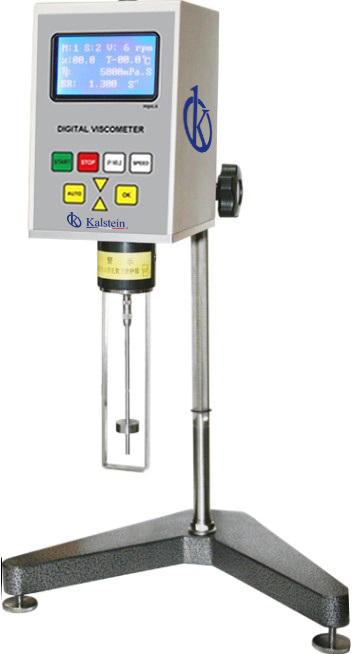Low viscosity viscometers are fluid measuring devices developed to evaluate the viscosity of liquids, oils and gasses. These devices are used to measure the relative fluidity of the product at a specific temperature, and also to help users make decisions about the viscosity of the product, and apply changes to bring it to desired values.
Low viscosity viscometers are designed to measure viscosity at low temperatures, a process known as viscoelasticity, without producing heat that can damage the product. This measurement is performed using a variety of mechanisms, depending on the specific model and the purpose for which it is being used. These measurements are critical for certain types of products, so you must have the appropriate equipment to make the measurement.
What are the types of low-viscosity viscometers?
Low viscosity viscometers are categorized as mechanical or pneumatic. Mechanical viscometers employ the principle of rotating plates where the liquid is forced between two plates moving in opposite directions at different speeds. This idea was invented by Heinrich Hertz in 1889. These viscometers provide accurate data on the viscosity of the fluid, but only at temperatures above the freezing point.
Pneumatic viscometers, on the other hand, are used to measure the viscosity of liquids at low temperatures. These devices employ a rod inside a tube, which moves through the liquid generating an axial current. The oscillating motion of the rod is measured by a displacement sensor to determine the viscosity of the liquid. These viscometers are useful for determining the viscosity of liquids with a high viscosity, such as lubricating oils, glycerol and ethanol.
What other equipment accompanies the viscosity measurement process?
Viscometers can also be combined with other measuring devices, such as pressure pumps, to obtain additional information about the liquid. These devices can be adjusted to operate on production lines and can also be programmed to test at different temperatures, pressures and other parameters. In this way, the measurement of multiple variables will allow a better evaluation of the product and the changes to be made.
These viscometers provide users with the necessary data to evaluate the viscosity of a liquid in a short time. These instruments offer reliable and accurate viscosity measurement at low temperatures with a very small margin of error. They also help users make decisions about the suitability of the product for the manufacturing process. When choosing a viscometer for a specific application, consideration should be given to materials of construction, component accuracy, size, price, ease of use, maintenance and safety.
You should also select a manufacturer that offers the best conditions in terms of warranty and service. These aspects can vary greatly depending on the type of device being used and the environment in which it will be used. In general, low-viscosity viscometers are a convenient and reliable way to measure the viscosity of a liquid or gas. These devices provide valuable information without any negative impact on the product. These devices are also reliable, durable and safe, guaranteeing users a quality measurement at low temperatures.
What Kalstein offers in low-viscosity viscometers
When measuring low viscosities, it is always recommended to select equipment that measures accurately in that range of values. In this regard, Kalstein offers the YR05851 – YR05852 cosmetic rotary dial viscometer. This equipment has as its most relevant features, the ability to measure viscosities between one to 10 cps, although it can be adapted to measure viscosities up to one hundred thousand cps. In addition to being a lightweight equipment, the accuracy of the measurements does not exceed five percent. To learn more about our equipment, we invite you to browse our web pages to compare the different viscometer models available. The links to the pages are HERE and HERE.

